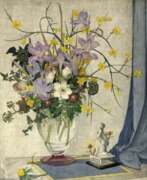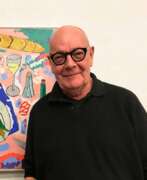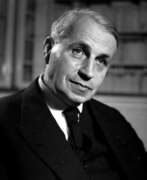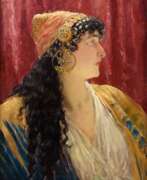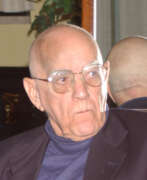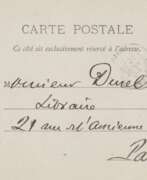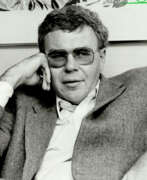Writers 20th century


Louise Abbéma was a French painter, sculptor, and designer, celebrated for her work during the Belle Époque. Born in Étampes in 1853 into an affluent Parisian family, she became well known for her portraits, particularly of the famous actress Sarah Bernhardt, and for decorative panels commissioned for various public buildings in Paris and the Palace of the Governor in Dakar, Senegal.
Abbéma's art often depicted the upper echelons of French society and reflected the Impressionist style through her light and rapid brushstrokes. She was also notable for her involvement in the women's movement, where she contributed to the emerging image of the 'New Woman' by portraying androgynous figures and themes of intellectualism and freedom.
Among her many honors, Abbéma was awarded the Palme Academiques in 1887, nominated as the Official Painter of the Third Republic, and in 1906, she became a Chevalier of the Legion of Honour. Her works, such as "Lunch in the Greenhouse" and "Portrait of Sarah Bernhardt," have seen a resurgence in popularity as the contribution of women to historical art gains more recognition.
For those interested in the evocative and historically rich artworks of Louise Abbéma, consider subscribing to our updates. We'll keep you informed about new sales, auctions, and exhibitions featuring Abbéma's work, ensuring you're always connected to the latest offerings in the art and antique collectors' sphere.




Arthur Adamov, born Arthur Adamian, is a French novelist and playwright, translator of Armenian origin.
Adamov was close to the Surrealists and was friends with Artaud and Giacometti. He wrote poetry and published the surrealist magazine "The Gap". In 1938 he had a nervous breakdown. In 1941 he was arrested for his hostile statements against the Vichy government, and was held in a camp in Argeles until the end of the war.
After the war, in a state of extreme depression, he began to write confessional prose and turned to drama.


Ansel Easton Adams was an American photographer and environmentalist, celebrated for his black-and-white images of the American West, particularly Yosemite National Park. His profound connection with nature was not only the subject of his art but also the essence of his environmental advocacy, earning him a revered place in both the art and conservation worlds.
Ansel Adams' early exposure to the beauty of nature and a supportive family environment nurtured his dual interests in music and photography. His photographic journey began with a simple Kodak Box Brownie camera, which he used during his early visits to Yosemite, a place that would become the central theme of his life's work. Ansel Adams' dedication to photography and the environment was interwoven, as he utilized his art to advocate for the conservation of America's natural landscapes.
In the 1930s, Adams co-founded Group f/64, advocating for photographic purity and sharpness of focus, principles that would define his work. His role in establishing the photography department at the Museum of Modern Art in New York underscored his commitment to elevating photography as a respected art form. Ansel Adams' work has been exhibited in prestigious institutions such as the Smithsonian American Art Museum and MoMA, showcasing his contributions to American art and environmentalism.
For collectors and art experts, Ansel Adams' legacy transcends his iconic images; it lies in his ability to merge aesthetic excellence with a passionate message of environmental stewardship. His photographs not only capture the grandeur of landscapes but also serve as a timeless call to preserve the natural world.
To delve deeper into the world of Ansel Easton Adams and stay updated on new product sales and auction events related to his work, signing up for updates is a step toward embracing the heritage of a pivotal figure in art and environmental advocacy.
Join our community of art and antique enthusiasts to honor Adams' vision and ensure his message continues to inspire future generations.


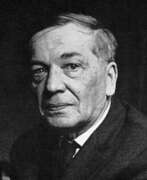

Mikhail Fedorovich Andrienko-Nechytailo (Russian: Михаил Фёдорович Андриенко-Нечитайло) was a Russian artist known for his contributions to the avant-garde movement. Born in 1894, he became renowned for his innovative approach to painting, stage design, and illustration. Andrienko-Nechytailo’s work is celebrated for its unique blend of Constructivism and Cubism, which set him apart from his contemporaries.
One of his special features was his ability to combine geometric forms with a vibrant color palette, creating visually striking compositions that challenged traditional artistic conventions. His works often explored themes of abstraction and the intersection of art and technology. His notable pieces are housed in prestigious collections, including the Tretyakov Gallery in Moscow and the Russian Museum in Saint Petersburg.
Collectors and art experts admire Andrienko-Nechytailo for his visionary approach and lasting impact on modern art. His legacy continues to influence contemporary artists and is a testament to his skill and creativity.
Sign up for updates on new product sales and auction events related to Mikhail Fedorovich Andrienko-Nechytailo. Stay informed about opportunities to add his remarkable works to your collection.
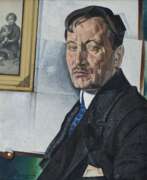

Yury Pavlovich Annenkov (Russian: Юрий Павлович Анненков) was a prominent Russian artist, renowned for his avant-garde book illustrations and portraits, as well as his work in theater and cinema. Born in 1889 in Petropavlovsk, Russian Empire, and passing away in 1974 in Paris, France, Annenkov's artistic journey was shaped by the tumultuous times he lived in. His work is celebrated for capturing the essence of an era marked by revolution and change, employing a style that is both dynamic and reflective of the Synthetism movement, emphasizing the synthetic essence of his subjects.
Annenkov's early years were spent in St. Petersburg, where he was influenced by prominent figures and movements of the time. He honed his skills in Paris, working in the studios of Maurice Denis and Félix Vallotton, and later, his talents led him to design iconic works for the Bolshevik government, such as the staging of "The Storming of the Winter Palace". His acclaimed book "Portraits," published in 1922, featured 80 pictures of key Russian art figures, showcasing his exceptional talent in capturing personalities through his art.
In 1924, Annenkov left Soviet Russia, eventually settling in Paris, where he continued to flourish as an artist, working on landscapes, female portraits, interiors, and achieving success in the film industry as a costume designer, notably receiving an Academy Award nomination for his work.
Among his notable works are "Dreams of a Provincial (Borovichi)," "Portrait of Elena Borisovna Annenkova," "June. Forest," "Portrait of Miron Abramovich Sherling," "Portrait of A.M. Gorky," and the "Illustration for the poem 'The Twelve' by A.A. Blok," each piece highlighting his ability to blend academic drawing with avant-garde techniques.
For collectors and art and antiques experts, Annenkov's works offer a glimpse into the rich tapestry of 20th-century Russian art, marked by its innovation, depth, and historical significance. His legacy continues to inspire and captivate audiences worldwide.
To stay updated on sales and auction events featuring Yury Pavlovich Annenkov's work, sign up for our newsletter. This subscription ensures you'll be the first to know about new product sales and auction events related to this remarkable artist.


Guillaume Apollinaire, real name Wilhelm Albert Vladimir Apollinaris de Wąż-Kostrowicki, a French poet of Polish descent, was a towering figure in the early 20th century's literary and art scenes. Known for his experimental verse and support of avant-garde art movements like Cubism and Surrealism, Apollinaire's work pushed the boundaries of traditional aesthetics and inspired a generation of artists and writers.
Guillaume Apollinaire's literary contributions were vast and varied. He was an early advocate for Cubism, a relationship most prominently seen in his collaborations with artists like Pablo Picasso. He not only wrote about art but also collected it, surrounding himself with works by modernist masters such as Henri Rousseau and Georges Braque. His Paris apartment was a small museum of modern art, filled with pieces he often sold to support his literary endeavors. This vibrant artistic environment fueled his creativity, leading to major works such as Alcools and Calligrammes, which explored the possibilities of poetic form and typography to represent visual and verbal content in a unified way.
Despite his innovative work in poetry and art criticism, Guillaume Apollinaire's life was marked by personal challenges, including a grievous injury during World War I. Yet, even these difficulties did not hinder his prolific output. Among his notable works during this period was the play Les Mamelles de Tirésias, which was performed in 1917 and is considered a precursor to theatrical Surrealism.
Apollinaire's influence extended beyond his lifetime, particularly through his mentoring of future Surrealist leaders like André Breton. His forward-thinking approach to art and literature made him a central figure in the transition from traditional to modernist forms in both fields.
For collectors and experts in art and antiques, Guillaume Apollinaire's work represents a nexus of literary brilliance and pivotal artistic movements. His life and work provide fascinating insights into the dynamic and transformative world of early 20th-century art and literature.
Sign up for updates on auctions and sales events featuring items related to Guillaume Apollinaire. Stay informed about opportunities to acquire unique artifacts that celebrate his legacy in the realms of poetry and art.


Ugo Attardi was an Italian painter, sculptor and writer. Attardi moved from Genoa to Rome in the early 1950s, where he formed the group Forma 1 together with other artists. His sculpture of Ulysses is now permanently installed in Battery Park in New York


Christian Ludwig Attersee, born Christian Ludwig, is an Austrian media artist living in Vienna and Semmering in Lower Austria.
The artist took his middle name, Attersee, from the area where he spent his youth. He studied at the Vienna Academy of Applied Arts and his work was characterized early on by flamboyant sexualization. He is known not only as a visual artist, but also as a musician, writer, object artist, designer, stage designer and film director. In the 1960s and 1970s he also created series on themes of food, everyday objects, beauty and cosmetics.
Attersee is known above all as one of the leading representatives of objective painting in Europe in the last 50 years. In the second half of the seventies he became the founder of the "New Austrian Painting". From 1990 to 2009, Atterse held a chair at the Vienna University of Applied Arts.


Dominique Aury, real name Anne Desclos, was a French writer, talented journalist, translator and editor.
Dominique Aury held the post of secretary at the publishing house Gallimard in Paris for many years from 1946. She was a jury member for a number of literary prizes, she translated into French works by Thomas Brown, James Hogg, Evelyn Waugh, Arthur Köstler, Yukio Mishima. In her articles she highlighted the problems of translation, analysed the work of English poets and writers, demonstrating a deep understanding of the literary process.
The most famous episode in Ori's career is the erotic novel Histoire d'O, published in 1954 under the cryptonym Pauline Réage. The novel was a resounding and scandalous success and was prosecuted several times. For 40 years, however, Orie never acknowledged her authorship, only to declare it openly in a 1994 interview with The New Yorker, calling the book a love letter to Jean Poland - author of the preface to the first publication of Histoire d'O.
Dominique Orie's writing style was poignant and intellectual, with insightful observations on sexuality and human relationships. She skillfully used words and language to evoke emotion and provoke thought. Her works have had a significant influence on sexual literature and feminist thought.


Michael Ayrton was a British artist and writer, renowned as a painter, printmaker, sculptor and designer, and also as a critic, broadcaster and novelist. His varied output of sculptures, illustrations, poems and stories reveals an obsession with flight, myths, mirrors and mazes.


Zair Isaakovich Azgur (Russian: Заир Исаакович Азгур) was a Soviet and Belarusian artist of the twentieth century. He is known as a sculptor, art historian and writer.
Zair Azgur worked in the field of easel and monumental sculpture. He created sculptural portraits of figures of the socialist and revolutionary movement, historical figures, famous masters of culture, as well as monuments. Azgur was an adherent of strict realistic form in art.


Dorothee Bachem is a German-born, distinctive artist and writer who runs a studio in Flensburg.
Bachem studied art at the Berlin University of the Arts and works in various techniques - multi-layered painting, collage, printmaking.
With her unique poetics, Bachem creates surreal, dreamlike, timeless picture stories in which the influence of Picasso and Cubism can be read.


Bele Bachem (real name Renate Gabriele Bachem) was a German painter, graphic designer, book illustrator, interior designer and writer. In 1997 Bachem was awarded the Order of Merit of the Federal Republic of Germany.
Bachem is considered one of the most important post-war German artists and one of the few surrealists in the illustration of German literature.


Hans Baluschek, full name Alphons Anton Alexander Hans Ernst Karl Maria Baluschek, was a German painter, graphic artist and writer, representative of the New Materiality style.
Baluschek studied at the Royal Academy of Arts, and in 1900 became a member of the Berlin Secession, a group of artists that also included Ernst Barlach, Max Beckmann, and Wassily Kandinsky. Baluschek was always socially critical, which was reflected in the subjects of his paintings. Many of his paintings are dedicated to the working class of Berlin, he addressed the gray everyday life of Berlin: gray air, gray walls, gray people. Baluschek is often categorized as a German Expressionist because of his emotional style, but his style has something of New Objectivity, Impressionism, and naive painting. He also drew illustrations for the popular children's book Little Peter's Trip to the Moon, and collaborated with periodicals as an illustrator.
World War I instilled patriotic feelings in Baluschek, and he painted a number of subjects on this theme. After the war, he joined the Social Democratic Party and became involved in labor movements. In 1926 he helped establish an artists' relief fund and later became director of the annual Berlin Exhibition. The German Nazis, who came to power in 1933, declared Baluschek a Marxist and a "degenerate artist," suspended him from all positions, and banned him from exhibiting.




Sabine Baring-Gould was a Victorian British clergyman, poet, writer and folklorist.
He traveled extensively in Europe, studied at Clare College, Cambridge, was ordained in the Church of England in 1864, and was appointed vicar at Horbury. Baring-Gould was a polyglot and knew six languages. Despite his ministry, he had a serious interest in supernatural phenomena and in 1865 published a book called The Book of Werewolves.
In addition to this, Baring-Gould was interested in a wide range of subjects. His work is diverse and covered theology, history, poetry, hymns, fiction, biography, travel, social commentary, and folklore. Baring-Gould collected the folk songs of old English singers, personally visiting them and recording the words and music. In 1889 he published a collection of Songs of the West in four parts, of which he was proud, and also wrote several patriotic hymns.
Baring-Gould was a very prolific writer: during his life he wrote many novels, published short stories in periodicals, the popular "Curious Myths of the Middle Ages," and others, his bibliography numbering some 1,250 works.
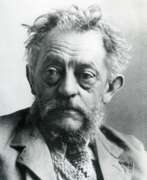

Ernst Heinrich Barlach was a German expressionist sculptor, medallist, printmaker and writer. Although he was a supporter of the war in the years leading to World War I, his participation in the war made him change his position, and he is mostly known for his sculptures protesting against the war. This created many conflicts during the rise of the Nazi Party, when most of his works were confiscated as degenerate art. Stylistically, his literary and artistic work would fall between the categories of twentieth-century Realism and Expressionism.


Peter Hill Beard was an American artist, photographer, diarist, and writer who lived and worked in New York City, Montauk and Kenya. His photographs of Africa, African animals and the journals that often integrated his photographs, have been widely shown and published since the 1960s.


Romare Bearden was an influential American artist, celebrated for his intricate collages that depict African American life. Born in 1911 in Charlotte, North Carolina, Bearden played a pivotal role in the Harlem Renaissance, associating with key figures like Duke Ellington and Langston Hughes. His artwork often explored themes of daily life, culture, and history through a unique blend of painting and collage, heavily influenced by Cubism and the Mexican muralists.
Bearden's most notable works include "The Block" and "Patchwork Quilt," both of which are praised for their vibrant narrative and depth, capturing the complexities of black urban life. His pieces are prominent in major museums like the Museum of Modern Art and the Metropolitan Museum of Art. Beyond visual arts, Bearden's legacy includes his contributions to literature and music, reflecting his diverse talents and intellectual interests.
For those interested in exploring Romare Bearden's art further, visiting collections where his works are held or reading more about his life and impact on American art and culture can be rewarding. For the latest updates on exhibitions and sales related to Bearden's work, sign up here [insert subscription link]. This will keep you informed about new opportunities to engage with Bearden's influential legacy.


Johannes Robert Becher was a German politician, poet, and novelist.
As a young man he was part of the literary avant-garde, writing in the style of Expressionism. As a communist, Becher was evacuated from the Nazi regime to the USSR during World War II, then returned to Germany, where he was among the founders of the GDR Academy of Arts in Berlin and was its president. He was also Minister of Culture of the German Democratic Republic from 1954 to 1958.


Marcus Behmer, full name Marcus Michael Douglas Behmer, known by the pseudonyms Marcotino und Maurice Besnaux, is a German artist, graphic designer and illustrator.
Marcus was the son of the painter Hermann Behmer, participated in World War I and painted miniature portraits of fellow soldiers. From 1900 he began to collaborate with Munich periodicals and book publishers. Bemer drew hundreds of drawings and illustrations and published a series of engravings that were recognized and successful. He also designed typefaces.
In 1936, Behmer was convicted of homosexuality and spent a year and a half in prison, where the artist also found the strength to draw. During World War II, almost all of Bemer's creations were lost or destroyed.
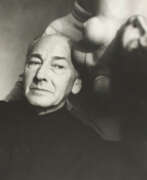

Hans Bellmer was a German graphic artist, sculptor, photographic artist, illustrator, and writer who spent most of his life in France.
In the 1930s Bellmer began working on the eroticized image of the deformed doll, contrasting it with the aesthetics of the "classical" body in Hitler's Germany. His graphic and literary explorations focus on the dismemberment and liberation of bodies. Bellmer's surrealist works are violent and provocative: they include puppet sculptures composed of the bodies of nude models, photographs, and prints.
In 1934, 18 photographs of dolls were published in the Parisian surrealist magazine Minotaur, and the Nazi regime declared Bellmer's art degenerate. In 1938, Bellmer emigrated to France.
After the end of the war, the artist continued his work, adding poetry to painting. He also authored illustrations for many works, particularly on erotic themes.


Saul Bellow, real name Solomon Bellows, is a Jewish American writer and Pulitzer Prize and Nobel Prize winner.
Sol Bellow was born in Canada to Jewish immigrant parents from St. Petersburg, Russia, and grew up in Chicago. He attended the University of Chicago and Northwestern University, majoring in anthropology and sociology. Chicago was the setting for many of his novels of the 1970s and 1980s. In 1993, he took a position in the English Department at Boston University.
Bellow wrote his first book, The Dangling Man (1944), while serving in the Merchant Marine during World War II, and he published the novel The Victim in 1947. Saul Bellow is considered one of the most important Jewish American writers who wrote after World War II. Like his predecessors, he offers a Jewish perspective on the themes of alienation and otherness in the difficult postwar era of fragmentation, translating the Yiddish American experience into English.
Bellow has received the world's highest honors for his works. In 1954, his novel The Adventures of Augie March won the National Book Award for fiction. In 1975, the Pulitzer Prize for his novel The Humboldt Gift; the International Herzog Literary Award; and the Croix de Chevalier des Arts et Lettres, France's highest literary honor for non-citizens. In 1976, Bellow was awarded the Nobel Prize for Literature.


Alexandre Nikolayevich Benois (Russian: Алекса́ндр Никола́евич Бенуа́) was a distinguished Russian artist, art critic, and historian, celebrated for his pivotal role in the art world, particularly in painting and stage design. Born into a family deeply embedded in the cultural fabric of Russia, Benois was instrumental in the development of the Russian artistic movement at the turn of the 20th century. His contributions to art and culture extend beyond his vivid paintings; he was a founding member of the World of Art (Mir iskusstva), a significant art movement and magazine that sought to elevate Russian artistry on the global stage.
Benois' work is notable for its intricate detailing, vibrant use of color, and the ability to convey deep narratives within each piece. His designs for ballets such as "Petrushka" and "The Sleeping Beauty" remain iconic, showcasing his mastery over the fusion of visual art and performance. This synthesis not only enhanced the ballets’ visual appeal but also deepened the audience's engagement with the narrative. Museums and galleries around the world, including the Russian Museum in St. Petersburg and the Tretyakov Gallery in Moscow, house his works, underscoring his global recognition and the enduring appeal of his artistic vision.
For collectors and experts in art and antiques, Benois' oeuvre represents a fascinating exploration of early 20th-century Russian culture, art, and the avant-garde movement. His ability to blend traditional Russian themes with the modernist trends of his time makes his work a valuable study in the evolution of modern art. Those interested in the rich tapestry of Russian cultural history and the interplay between art and performance will find Benois' contributions invaluable.
To stay informed about new discoveries, sales, and auction events related to Alexandre Nikolayevich Benois, we encourage you to sign up for updates. This subscription is tailored specifically for enthusiasts eager to deepen their appreciation and understanding of Benois' legacy, ensuring you're the first to know about opportunities to acquire pieces connected to this luminary of Russian art.


Gastone Biggi was an Italian painter, sculptor, writer, poet, and musicologist.
Biggi combined painting with his activities as an art writer and musicologist. In 1962 his key work The Birth of the Point was published, theorizing the study of the sign module, which he would develop throughout his life. That same year he formed Group 1.


Edmond Bille was a Swiss artist. Bille engaged in intense and varied activity as painter, engraver, stained glass artist, journalist, writer, and politician. He is the creator of the stained glass windows around the altar of the Cathedral of Lausanne, capital of the Swiss canton of Vaud.


Quentin Saxby Blake is an English cartoonist, caricaturist, illustrator and children's writer. He has illustrated over 300 books, including 18 written by Roald Dahl, which are among his most popular works.[a] For his lasting contribution as a children's illustrator he won the biennial international Hans Christian Andersen Award in 2002, the highest recognition available to creators of children's books. From 1999 to 2001, he was the inaugural British Children's Laureate. He is a patron of the Association of Illustrators.


Margaret Bourke-White was an American photographer and photojournalist. She studied photography at the Clarence H. White School of Photography. White, where she developed her trademark style using dramatic angles and strong contrasts of light and shadow.
Burke-White was one of the first women photographers to work for Life magazine, and her images became synonymous with the magazine's coverage of major world events such as World War II and the Korean War. She was also the first woman photographer to work in war zones during World War II, where she captured powerful images of warfare and its impact on civilians.
In addition to war photography, Bourke-White also documented the Great Depression in the United States and was one of the few photographers to gain access to the Soviet Union in the 1930s where she documented Soviet industrialization and the lives of ordinary people.
Bourke-White's work was known for its powerful impact and stark realism. She often risked her safety to get the perfect shot and her images continue to inspire photographers today. She published several books of her work, including 'Eyes on Russia' and 'Dear Fatherland, Rest in Peace'.
Bourke-White left behind a legacy as one of the greatest photojournalists of the 20th century.


Désiré-Magloire Bourneville was a French physician, neurologist, innovator and educator, and statesman.
Born into a modest family, Bourneville began his medical education in 1860 and for about ten years worked as an assistant to Jean-Martin Charcot, where, together with Paul Régnard, he supervised the publication of "Photographic Iconography of Salpetriere". During the Franco-Prussian War, he served as both surgeon and physician's assistant. Appointed physician at Bissetre, Borneville devoted himself to the medical and educational care of "idiots and epileptics" for whom he organized a service, and later directed the Fondation Vallée in Gentilly until his death. He is considered one of the earliest child psychiatrists.
In 1876, Bourneville was elected a municipal councilor of Paris, three years later he became a general councilor of the Seine, and then a deputy. In this capacity, Bourneville carried out several health reforms: he became the rapporteur for the public assistance budget and the budget for psychiatric asylums, achieved the creation of the first special classes for mentally retarded children, and the first municipal nursing school in Salpêtrière.
Bourneville had many very different talents. Very early on he became interested in medical journalism, where he made a name for himself through the vividness of his articles. In 1873, he founded the journal Progrès Médical, which promoted the tenets of avant-garde medicine, open to pioneering scientific developments (Bourneville published Charcot's lessons) and social issues. He fully developed the theoretical and practical foundations of teaching for the nursing profession. Outraged by the lack of practitioners' professional knowledge of obstetrics, he worked to create a new medical specialty, gynecology. But his main purpose in life was to educate and nurture those who were labeled "idiots" and mentally retarded.


René Boylesve, birth name René Marie Auguste Tardiveau, is a French writer and literary critic, a member of the Académie Française.
Boylesve was educated at Poitiers, Tours, and Paris, studying humanities and fine arts, natural sciences, and law. Ten years later, under his mother's maiden name, he wrote his first novel, The Physician of the Lady of Nean (1894). These were followed by other books, and then came the series known as the "Touraine novels": "Mademoiselle Cloke" (1899), "Beke" (1901), "The Child at the Balustrade" (1903), "The Educated Girl" (1909) and others. In these works, the author expertly depicts the mores of the provincial petty bourgeoisie. With a richly detailed style and characteristic irony Boylesve tells about the triumph of conventional values over artistic and spiritual aspirations.
In 1918 René Boylesve was elected a member of the French Academy.


John Randall Bratby was an English painter who founded the kitchen sink realism style of art that was influential in the late 1950s. He made portraits of his family and celebrities. His works were seen in television and film. Bratby was also a writer.


Micha Brendel is a German artist living and working in Hohendorf/Lower Lusatia.
Brendel started his career as an assistant artist, then studied at the Kunsthochschule Berlin-Weißensee and at the HfBK Dresden. He was one of the founders of the Auto-Perforations-Artisten association and editor of independent magazines for artists.
Brendel's early works centered on self-portraits and photographs of his own body, distorted with photographic techniques. He also made extensive use of organics, including animal bones and skin, in the creation of a wide variety of works. A common theme is self-destruction and alienation, shock and disgust. Brendel wrote detailed accounts of his creative process that became the basis for books.
Brendel's work, which often crosses boundaries, includes drawings, photographs, inscriptions, artist's books, taxidermy objects, installations and performances. He is currently intensifying his work with writing and nature and curating exhibition projects.


Jules Adolphe Breton was a French artist celebrated for his realistic portrayals of peasant life in 19th-century France. His work, deeply influenced by the rural landscapes and traditions of Artois, reflects a bygone era increasingly threatened by industrialization. Notable for capturing the dignity and toil of peasants, Breton's paintings like "The Gleaners" and "The Blessing of the Wheat" earned accolades for their heartfelt depiction of rural customs and their socio-economic undertones, particularly during a period when the rights of the rural poor were heavily debated.
Jules Breton's artistic merit extended beyond painting; he authored several books and volumes of poetry that provide insights into his life and the era's art scene. His notable works such as "The Song of the Lark" and "The End of the Day" are housed in prestigious institutions like the Art Institute of Chicago, demonstrating his posthumous recognition. This piece, in particular, was famously declared a favorite by Eleanor Roosevelt at the 1934 Chicago World's Fair, marking a peak in his acclaim.
For art collectors and experts, Jules Breton's oeuvre offers a poignant glimpse into 19th-century rural France, preserved through his exceptional skill and emotional depth. His works not only depict the daily lives of peasants but also resonate with broader themes of tradition and change, making them significant both historically and artistically.
For updates on exhibitions and sales of Jules Adolphe Breton's works, consider signing up for relevant newsletters. This ensures you remain informed about opportunities to acquire pieces by this distinguished painter.


André Breton was a French writer, poet, and anti-fascist, renowned as the principal founder and leading theorist of Surrealism, an influential movement that sought to release the creative potential of the unconscious mind. Born in Tinchebray, France, in 1896, Breton's work was deeply influenced by the theories of Sigmund Freud and was characterized by a fascination with dreams, the irrational, and the workings of the mind. As a cultural icon, his contributions extended beyond literature into the realms of art, sculpture, and painting, making him a pivotal figure in 20th-century artistic movements.
Breton's seminal work, the "Manifesto of Surrealism" (1924), outlined the principles of the movement, advocating for the expression of the subconscious and the importance of dreams as a source of artistic inspiration. His leadership and writings not only shaped Surrealism but also had a lasting impact on the broader culture of art, influencing countless artists, painters, and sculptors. Breton's ability to merge poetry with visual arts led to collaborations with prominent artists like Salvador Dalí, Max Ernst, and Joan Miró, further cementing his legacy as a central figure in modern art.
Notably, André Breton's works and personal collection, which included art pieces and surreal objects, have been displayed in museums and galleries worldwide, showcasing his eclectic taste and profound influence on the art world. His Paris apartment was a gathering place for artists and intellectuals, becoming a hub of Surrealist activity and thought. For collectors and experts in art and antiques, Breton's contributions represent a fascinating intersection of literary prowess and visual creativity, highlighting the enduring relevance of Surrealism.
For those interested in exploring the depths of Surrealism and André Breton's groundbreaking contributions, signing up for updates can provide exclusive access to new product sales and auction events related to this pivotal artist and thinker. This subscription is an invaluable resource for collectors and enthusiasts keen to deepen their understanding of Breton's influence and the broader cultural movements he shaped.


Raymond Redvers Briggs was a British writer, illustrator, and cartoonist.
A professional illustrator, he worked on the design of children's books. In the 1960s, Briggs discovered his talent and ability to combine words and pictures, using a form of strip cartooning that defined his later work.
Briggs is best known for his wordless book The Snowman, published in 1978, a sort of cute children's tale but with deep meaning. The animated and musical versions of this book are popular in Britain and are shown annually at Christmas.


Jason Brooks is a contemporary British artist known for his fashion illustrations and portraits. He was born in 1969 and studied at Chelsea School of Art and Central Saint Martins in London. His work has been published in publications such as Vogue, Elle and The New Yorker.
Jason Brooks has worked with fashion brands including Chanel, L'Oreal and Christian Dior. As well as commercial work, he has exhibited his work in galleries around the world, including the Saatchi Gallery in London and the Museum of Modern Art in Tokyo.


Anselmo Bucci was an Italian painter, printmaker, writer and one of the founders of the Neoclassical trend in Italian art in the early 20th century, the Novecento.
Anselmo Bucci studied painting in Venice and the Brera Academy in Milan. From 1906 to 1914, he lived in Paris where he joined the Groupe libre, a group of artists who accepted a departure from academic canons, but did not share the ideas of avant-gardism.
Anselmo Bucci is a modernist painter, symbolist with strong Fauvist features. Created a number of monumental works, as well as small paintings of a lyrical nature.
Along with painting, he was actively engaged in literary activities. In 1930 he was one of the first recipients of the prestigious Viareggio literary prize.


Lothar-Günther Buchheim was a German writer, artist, and collector.
He studied at the Academy of Fine Arts in Dresden and at the Academy of Fine Arts in Munich. During World War II he served in Hitler's navy as a correspondent and worked as a war artist for the Nazi propaganda apparatus. His portraits of Third Reich officers and images of submarines were successful. Buchheim rose to fame with his novel Das Boot, which became an international bestseller and the basis for the movie Submarine.


Lyudmila Davidovna Burliuk-Kuznetsova (Russian: Людмила Давидовна Бурлюк-Кузнецова) was a pivotal figure in the Russian avant-garde movement, born into a family renowned for its contribution to art and poetry. Her journey into the art world began with her studies at the Higher Art School of Painting, Sculpture, and Architecture at the Imperial Academy of Arts in St. Petersburg from 1903 to 1907. During her studies, she married Vasily Kuznetsov, a master of monumental and decorative sculpture, which marked the beginning of her active engagement with the Russian art scene. She was a vibrant participant in exhibitions across Russia, including those by the Association of Kharkov Artists, the Union of Russian Artists in St. Petersburg, and the art group "Wreath-Stefanos".
After a flourishing start, the mid-1910s saw Burliuk-Kuznetsova stepping back from her artistic endeavors to focus on her family. The tragic death of her husband in 1923 due to typhus left her to support their four children through her art, creating a diverse range of works from portraits to poster designs, even for the Saratov circus. Despite the personal hardships and the loss of two sons during World War II, her resilience and dedication to art never waned.
In her later years, she moved to Prague to live with her sister Marianna, where she rediscovered her passion for art and held a personal exhibition in 1967. Her work, deeply influenced by impressionism and particularly by the works of Paul Cezanne and Camille Pissarro, demonstrated her exceptional talent and her ability to capture the subtle interplay of light and atmosphere, conveying the magic of unpretentious natural motifs with grace and sensitivity.
For collectors and experts in art and antiques, Burliuk-Kuznetsova's story is not just one of artistic achievement but also of profound personal strength and perseverance. Her legacy is a testament to the vibrant spirit of the Russian avant-garde movement and its enduring influence on the art world.
To stay updated on artworks and auction events related to Lyudmila Davidovna Burliuk-Kuznetsova, consider signing up for updates. This subscription will ensure you're informed about new sales and exhibitions, keeping you connected to the legacy of this remarkable artist.


Michael Buthe was a German artist who lived and worked between Germany and Morocco. He exhibited widely throughout Europe during his life and is known for his eclectic and prolific oeuvre which encompasses painting, sculpture, and installation.


Michel Butor was a French writer and poet, associated with the Nouveau Roman literary movement of the 1950s and 1960s. He was known for his experimental writing style, which often challenged traditional narrative structures and explored the relationship between language, identity, and memory.
Butor studied philosophy and literature at the Sorbonne in Paris. In 1954, he published his first novel, "Passage de Milan," which established his reputation as a leading figure of the Nouveau Roman movement.
Throughout his career, Butor wrote more than twenty novels, as well as essays, poetry, and other works. His writing often incorporated elements of travelogue and autobiography, and he frequently collaborated with visual artists on projects that combined text and image.
In addition to his literary work, Butor was a respected teacher and critic, and he lectured at universities around the world. He was awarded numerous honors and awards for his contributions to French literature, including the Prix Renaudot in 1957.
His legacy as an innovative and influential writer continues to be celebrated by literary scholars and readers around the world.


Robert Byron was a British traveler, writer, historian and art historian.
Byron studied at Merton College (Oxford), in his final year of university he traveled to Greece and described it in the book "Europe in the looking glass" (1926). The work "Station. Athos, Treasures and People" (1928) focuses on the monasteries of Mount Athos, and "Byzantine Achievements" (1929) on classical Greek culture, Byzantine art and architecture. Byron's other publications include Essays on India (1931) and First Russia, Then Tibet (1933).
In the early 1930s, Robert Byron traveled extensively in India, Persia, Tibet, Russia, and elsewhere. His most famous work is The Road to Oxiana (1937), which was written after traveling from Italy to India and is devoted to researching the origins of Islamic architecture. The route took him through Palestine, Syria, and Iraq, after which Byron visited Kermanshah, Tehran, Tabriz, Mashad, Herat, Isfahan, Shiraz, Persepolis, Sultania, Mazare Sharif, Kabul, and others. This book is based on his diaries and combines erudition and fascination. An aesthete and architectural art historian, Byron described the region's great Islamic monuments in elegant, lexically rich prose. He also took his own photographs. This photographic archive is now in the Conway Library of the Courtauld Institute in London and is of great value.
Talented and versatile, full of strength Robert Byron died at the age of 36, when the ship on which he was traveling to Cairo as a special war correspondent, was hit by a German U-boat torpedo off the northern coast of Scotland.


Thomas Calloway Lea III was an American muralist, illustrator, painter, war correspondent, writer and historian. Much of his fiction and literary work has focused on Texas, north-central Mexico, and his World War II experiences in the South Pacific and Asia. Two of his most popular novels, The Brave Bulls and The Wonderful Country, are considered classics of Southwestern American literature.


Massimo Campigli was an Italian painter and writer. He was studied art in Florence and Paris.
Campigli's art was heavily influenced by the Cubist and Surrealist movements, and his paintings often featured bold, geometric shapes and stylized figures. He was known for his use of bright colors and flat planes of color, which gave his work a sense of depth and dimension.
In addition to his art, Campigli was also a writer, and published several books and essays on art and literature throughout his career. He was a member of the Italian Communist Party, and his political beliefs often informed his work.
Campigli's art was widely exhibited throughout Europe and the United States during his lifetime, and he received numerous awards and honors for his contributions to the arts.
Today, Campigli is considered one of the most important Italian painters of the 20th century, and his work continues to be studied and exhibited around the world. His legacy has had a significant impact on the development of modern and contemporary art.
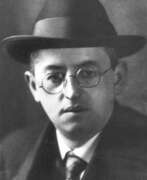

Josef Čapek was a Czech artist, writer, and journalist. He was the younger brother of writer Karel Čapek. Josef Čapek studied at the School of Applied Arts in Prague and later in Paris, where he was influenced by Cubism and Surrealism.
Čapek was a prolific artist, working in various mediums including painting, printmaking, and illustration. He is perhaps best known for his work in the area of puppetry, having created a number of puppet shows that were popular in Czechoslovakia during the 1920s and 1930s. His puppets were known for their expressive faces and whimsical designs.
Čapek was also a writer and journalist, and he wrote plays, essays, and articles for various newspapers and magazines. He was a member of the Czechoslovakian avant-garde group Devětsil, which promoted modern art and literature in the country.
During World War II, Čapek was arrested by the Nazis for his anti-fascist views and was sent to the Bergen-Belsen concentration camp. He died there in 1945, just weeks before the camp was liberated by Allied forces.
Čapek's legacy as an artist and writer is significant, and he is considered one of the most important Czech artists of the 20th century. His work is represented in many collections around the world, including the National Gallery in Prague and the Museum of Modern Art in New York.


Alois Carigiet was a Swiss graphic designer, painter, and illustrator. He may be known best for six children's picture books set in the Alps, A Bell for Ursli and its sequels, written by Selina Chönz, and three that he wrote himself. In 1966 he received the inaugural Hans Christian Andersen Medal for children's illustrators.


Leonora Carrington was a British-born Mexican artist, surrealist painter, and novelist. She lived most of her adult life in Mexico City and was one of the last surviving participants in the surrealist movement of the 1930s. Carrington was also a founding member of the women's liberation movement in Mexico during the 1970s.






















